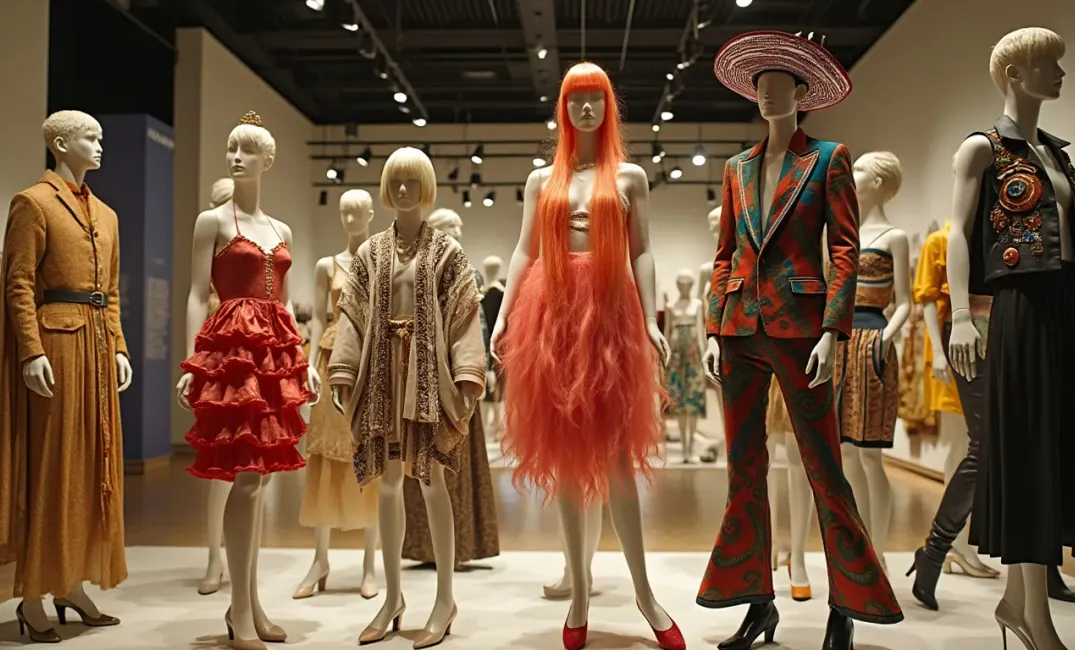Introduction: The Mosaic of Fashioning Identity
"Fashion is the armor to survive the reality of everyday life." — Bill Cunningham
Fashion speaks not merely in cloth and textile, but in expressions of time, identity, culture, and innovation that ripple through history. It cloaks humanity in diversity and adaptability, distinguishing yet connecting across eras and continents. From ancient elegance and ceremonial garb to the avant-garde experimentations of the modern runway, fashion weaves complex narratives of society and individuality. This entry delves into the journey of human fashion, showcasing how style embraces identity, challenges norms, and embodies cultural zeitgeists, leaving its legacy etched in the annals of civilization.
Ancient Threads: Foundations of Fashion
The Beginnings: Practical to Symbolic Garb
- Primitive Artistry and Survival: Clothing initially served protection and utility in early human societies. Furs, hides, and plant fibers provided warmth and coverage, facilitating adaptation to diverse environments. Over time, the human inclination for aesthetics transformed these practical designs into early exhibitions of personal and societal identity.
- Ceremonial and Symbolic Dress: In ancient cultures, clothing transcended functionality to convey spiritual and social meanings. Egyptian linen, adorned with intricate patterns, symbolized purity and religious devotion. Mesopotamian and Indus Valley dress incorporated vibrant pigments and embellishments denoting hierarchical standing and spiritual beliefs.
Regional and Cultural Flourishing
- The Garb of Kingdoms: Egyptian garments, such as kilts and robes, were complemented by jewelry and headdresses, reflecting celestial beliefs. Across the sea, the Mycenaean and Minoan societies adorned themselves in layered textiles manifesting opulence and illustrating mythological tales.
- Dynastic China and Silk Road Influence: The emergence of silk in ancient China revolutionized fashion with its luxurious texture and aesthetic versatility. The Silk Road facilitated cultural exchange, allowing dynamic cross-pollination of textile artistry and style across Asia, Europe, and the Middle East.
The Evolution of Fashion Through Empires
Power and Prestige in Fabric
- Roman and Byzantine Grandeur: Roman dress was a testament to social structure and political influence. Togas and stolas signified citizenship and class, reflecting personal and state identity. Byzantium advanced textile arts with silk, embroidery, and intricate patterns, building a legacy of elegance intertwined with imperial orthodoxy.
- Medieval Europe's Tapestry: In medieval Europe, fashion saw an evolution driven by religious and feudal influences. Modesty and decorum governed by ecclesiastical authority shaped attire, yet nobility expressed status through elaborate garments adorned with lace, fur, and precious metals.
Cultural Confluence in Islamic and African Traditions
- The Islamic Golden Age: Islamic empires flourished with cultural exchanges that infused fashion with innovation. Luxurious fabrics and ornate designs thrived as Abbasid and Umayyad textiles projected a synthesis of Persian, Arabic, and Byzantine influences—celebrating artistic and intellectual excellence.
- African Fashion Narratives: African clothing styles were vibrant canvases, shaped by environment, spirituality, and community. Textiles like kente and mudcloth carried symbolic patterns narrating ancestral stories, familial lineage, and cultural identity, preserving traditions through evolving regional narratives.
Fashion as Rebellion and Revelation
The Renaissance to the Industrial Revolution
- Renaissance Rebirth: The Renaissance heralded a flourish of creativity, redefining fashion with influences of art, exploration, and science. Garments became canvases for self-expression; the evolution of tailoring and use of vivid dyes signaled a cultural resurgence that emphasized individualism and exploration.
- Industrial Revolution's Threads: Technological advancements revolutionized textile production. The Spinning Jenny and power loom made fashion more accessible, democratizing style beyond aristocracy. Fashion responded to rapid societal changes, with styles reflecting modernism's optimism and Victorian resistances to progress.
20th Century: Fashion and Identity
- Roaring Twenties and Revolutionary Style: Post-war liberation erupted into the roaring twenties, where radical shifts embraced flapper dresses and bobbing hairstyles—challenging norms and championing modern femininity. Icons rejected past constraints; garments echoed newfound freedoms and cultural effervescence.
- Counterculture and Subversion: Fashion became a powerful voice in counterculture movements—1960s hippies to 1980s punk—rebelling against conformity. Designers like Yves Saint Laurent and Vivienne Westwood wielded fashion as artistic provocation, challenging societal structures and fostering inclusive dialogues.
Fashion's Modern Metamorphosis: Innovation and Diversity
Garments of New Frontiers
- The Digital Age and Fast Fashion: Technology transformed the landscape of fashion. The digital age accelerated trends and democratized access through social media platforms, sparking rapid style evolution but also generating concerns around sustainability and ethical production practices.
- Inclusivity and Ethical Design: The 21st century witnessed a renaissance of consciousness within fashion. Movements advocating size, gender, and cultural representation urged spaces of inclusion within an industry historically dominated by exclusivity, where diversity emerged as a core ethos.
Globalization and Cultural Dialogue
- Cultural Fusion and Revival: Today's fashion transcends borders, drawing from a kaleidoscope of global traditions to cultivate hybrid styles that celebrate cultural diversity. Indigenous designs are revitalized, honoring heritage while engaging contemporary aesthetics, binding the past and present through creative innovation.
- Sustainability as a Fashion Imperative: Societal shifts towards ecological awareness are spurring industries towards sustainable practices. Designers seek alternatives like plant-based fabrics and circular economy models, challenging paradigms of consumption and promoting conscientious stewardship of finite resources.
Conclusion: Fashioning the Future
"Fashion is a form of ugliness so intolerable that we have to alter it every six months." — Oscar Wilde
Fashion remains a vibrant interplay of identity and expression, amounting to both reflection and rebellion. It is a language that communicates humanity’s creativity, defies authority, recounts history, and envisions futures. The legacy of human fashion is a dynamic spectrum, encompassing aspirations, socio-economic shifts, and philosophical inquiries.
As we fumble through the expanses of our cosmic journey, fashion offers frameworks for resilience, bringing continuity and comfort while acknowledging transformation. The garments we create and embrace bind us to heritage and possibility, encouraging future custodians of humanity to navigate shared challenges with innovation and integrity.
The odyssey of fashion will continue, interweaving dreams and identities—draped in hues of courage and adorned with threads of hope. With each seam sewn as a testament to human narrative, fashion’s quilt offers warmth to the spirit and armor for the soul, carefully crafting continuity amidst humanity’s unfolding stories, dreams, and lives yet to venture through untrodden realms of the universe.
TEXTILES, FASHION, DIVERSITY, IDENTITY, SUSTAINABILITY, GLOBAL INFLUENCES, CULTURE, SOCIAL CHANGE, HISTORY, INNOVATION

